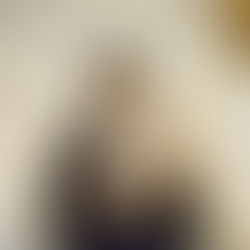Re-Enchanting Silicon Valley
"Despite their commitment to the idea that genuine community can exist on the internet, many rationalists have affirmed the importance of community in the flesh as well. Bay Area rationalists have even congregated in group houses. Another physical gathering place is the Center for Applied Rationality (CFAR), which advances the cause of combating existential AI risk by running intensive four-day workshops on rationality. The 2016 annual LessWrong survey of rationalists had about three thousand respondents, perhaps a ballpark number for the community’s size.
In building a shared culture, some rationalists draw on the example of religious communities. In a recent post on his blog Compass Rose, Ben Hoffman weighs the pros and cons of becoming a Quaker, given their track record of coming to what he considers correct positions (like abolitionism and pacifism) before the rest of society. In another post, he advocates the wisdom of Jewish Sabbath restrictions as a sanity check on the modern world: “If something like the Orthodox Sabbath seems impossibly hard, or if you try to keep it but end up breaking it every week – as my Reform Jewish family did – then you should consider that perhaps, despite the propaganda of the palliatives [e.g., fast food, Facebook], you are in a permanent state of emergency.” Contemporary society drowns us in noisy demands, he argues, producing spread-too-thin communities and lonely individuals.
Altair has attended and helped organize iterations of the rationalists’ Secular Solstice celebration. The event had its genesis in rationalists’ observations of other cultures’ various rituals and traditions. “It may be weird to engineer that, but we’re all engineers,” says Altair. The first Secular Solstice event was spearheaded by musician Raymond Arnold in 2013. Arnold wrote in an introduction to a book of Solstice songs: “I have some oddly specific, nuanced, and weird beliefs. And I had the hubris to arrange a night of carefully designed ritual for myself and my friends to celebrate them.” The Solstice’s central structure is based on light and darkness. Attendees bring and light “oil lamps, LEDs, plasma balls and imitation lightsabers” that are eventually extinguished so that participants can experience darkness together. Finally, everything is lit again, a symbol of a brighter future. It’s a powerful visual, one that feels like a processed and repurposed Easter vigil, though it was apparently conceived in design as “reverse Hanukkah.”
Music is a central component of the event. One of Altair’s favorites is the curiously titled “The Word of God,” a deist encomium to scientific investigation with a refrain of variations on “Humans wrote the Bible, God wrote the rocks.” After a few Solstices, Arnold amped up the song’s secularism by altering the lyrics to “Humans wrote the book of earth, time wrote the rocks” and variations thereon – God and the Bible have disappeared even as objects of deist critique.
Apart from songs, the event features secular sermons and mindfulness exercises. Many of these focus on hopes and fears for the far-flung future, asking the attendees, “Are we being good ancestors?” It struck me that although Christians’ vision of the future is different, this would be a useful question to ask ourselves as well."

























